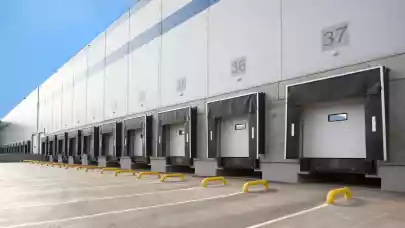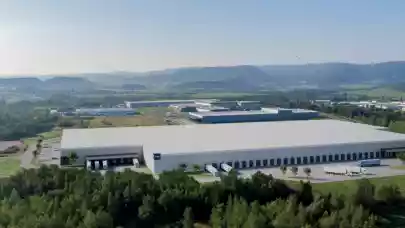
Despite the COVID-19 pandemic, warehouse take-up hit a record high of 1.6 million sqm, reveals an industrial market summary for Q1 2021 released by global real estate services firm Cushman & Wakefield. The strongest leasing activity was reported in Poznań, the Warsaw area, Upper Silesia and Central Poland.
Total warehouse take-up hit a record high in the first three months of 2021 with 1.6 million sqm transacted, which represented a 70% increase year-on-year. Net take-up comprising new leases and expansions amounted to 1.1 million sqm, accounting for 71% of the leasing volume while the remaining 29% came through lease extensions. The strongest leasing activity was recorded in Poznań (a 23% share of the total take-up), followed by Warsaw (19%), Upper Silesia (17%) and Central Poland (14%). Take-up predominantly came from logistics and retail/FMCG, which accounted for 30% and 21% of the total leasing volume, respectively, while 13% and 11% of all deals came from the manufacturing and automotive sectors, which are becoming increasingly active on the leasing market. Due to disruptions to the global logistical network, many companies are rethinking their stock management strategies by diversifying supply sources and expanding warehouse footprints in order to maintain higher levels of strategic stock.
“The robust demand for warehouse space in Poland continues to be driven largely by the rapid growth of e‑commerce. Active market players include both global e-commerce giants such as Amazon and Zalando, online stores, logistics operators, parcel delivery companies, and leading retailers developing multichannel sales strategies for various types of products, including fashion, DIY/furniture, home appliances and electronics, FMCG, cosmetics and food. As a result, tenants are actively reshaping their distribution networks and expanding their warehouse footprints close to the central zones of large urban areas in order to streamline last-mile logistics; they are also investing in regional distribution centres, cross-dock facilities and big-box BTS projects for cross-border logistics,” says Adrian Semaan, Senior Research Consultant, Industrial Agency, Cushman & Wakefield.
Warehouse availability remains stable despite high supply levels
At the end of the first quarter of 2021, there was approximately 1.41 million sqm of vacant space, accounting for 6.5% of Poland’s total industrial stock. Despite high supply levels, warehouse availability remained stable, but the vacancy rate edged down by 0.3 pp. quarter-on-quarter and by 0.9 pp year-on-year. Headline rents were in the €2.50-3.80/sqm/month range for big-box warehouses, while they stood at €4.00-5.25/sqm/month for SBUs in Poland’s core urban markets.
“Financial incentives from developers usually amount to 10-30% of the base rental rate and vary depending on lease conditions. They include rent-free periods of one or two months per lease year and fit-out contributions or moving allowances. Due to rising costs of general contractor services, robust demand amid limited speculative construction, the second half of 2021 is likely to see a slight upward rental growth on some regional markets,” adds Adrian Semaan.
Development activity continues unabated
Close to 750,000 sqm of warehouse space was delivered to the market in the first quarter of 2021, bringing Poland’s total industrial stock to 21.5 million sqm. Of the 36 completions, the largest included the second phase of a BTS project for EURO-net in Prologis Park Janki, projects developed for BBK SA and DPD in Panattoni Park Gdansk Airport, Panattoni BTS Czeladź for 4F, and a BTS facility for Polomarket in 7R Park Tczew.
Development activity continues to be driven by strong occupier demand. In the first quarter of 2021, projects broke ground for 1.2 million sqm of warehouse space, bringing the total development pipeline to 2.47 million sqm. Construction activity gathered pace in Poznań, Central Poland and Western Poland, where the development pipeline includes - in addition to a major logistics centre underway - further phases of industrial projects in Gorzów Wielkopolski, Zielona Góra and Zgorzelec developed in response to the growth of cross-border logistics and e-commerce operations. Warsaw and Upper Silesia are experiencing a development downturn due to last year’s high supply and a temporary oversupply in these markets at the moment. Regarding other regional markets, Tricity, Szczecin and Lublin are expected to see their warehouse stock grow by more than 10%, while development activity is also set to accelerate in the Bydgoszcz-Toruń market. While some emerging markets such as Olsztyn and Kalisz continue to be targeted by developers, Wałbrzych and Siedlce are likely to join them shortly. At the end of first quarter of 2021, over 70% of the development pipeline was secured with pre-lets, up by around 20 pp year-on-year.
“We expect occupier demand and supply levels to remain high in the coming months. The industrial market will be driven by such factors as the continued expansion of e-commerce, the development of the country’s system of express roads and motorways enabling geographical diversification of the logistics network, and an influx of foreign investment into Poland required to ensure continuity of manufacturing operations in Europe (nearshoring). Logistics assets will remain in strong demand among foreign investment funds,” says Joanna Sinkiewicz, Partner, Head of Industrial Agency, CEE, Cushman & Wakefield.



